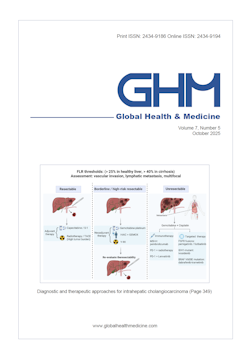Global Health & Medicine 2021;3(2):107-111.
Effective screening strategies for detection of asymptomatic COVID-19 travelers at airport quarantine stations: Exploratory findings in Japan
NorizukiM, Hachiya M, Motohashi A, Moriya A, Mezaki K, Kimura M, Sugiura W, Akashi H, Umeda T
The quantitative reverse transcription polymerase chain reaction method using nasopharyngeal swabs (NPS RT-qPCR) is regarded as the reference standard for diagnosing coronavirus disease 2019 (COVID-19). However, when using NPS RT-qPCR at busy airport quarantine stations, there are constraints on testing capacity, time, travelers’ tolerance, and availability of personal protective equipment for quarantine officers. A feasible alternative is therefore needed to test incoming travelers, especially when passenger numbers increase with the resumption of business, tourism, and economic activities. To explore alternatives to NPS RT-qPCR, we collected nasopharyngeal, anterior nasal, and saliva samples chronologically over days 1-7 from asymptomatic COVID-19 air travelers who were under quarantine at a designated facility, and we then compared test results for 9 different methods, comprising RT-qPCR (including the reference method), loop-mediated isothermal amplification (LAMP), and qualitative and quantitative antigen testing. We evaluated sensitivity for 97 person-day samples independently to evaluate asymptomatic travelers regardless of their testing date and period of asymptomatic status upon entry. Sensitivity of the different tests varied from 46.6% to 81.0%, but this was improved from 72.7% to 100.0% when the viral load was > 104 copies/sample on NPS RT-qPCR. Thus, most high-risk asymptomatic travelers with higher viral load would be detected by the tests evaluated. Quantitative antigen testing using saliva samples showed 90.9% sensitivity and provided quicker results, and should be an acceptable alternative to NPS RT-qPCR at busy airport quarantine stations. We discuss the implications of our exploratory findings for establishing a comprehensive and feasible testing strategy for COVID-19 among air passengers.
DOI: 10.35772/ghm.2020.01109







